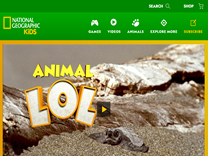Porcupines are lumbering, rotund rodents with needle-like spikes, called quills, covering their back, sides, and tail. A single porcupine can have more than 30,000 quills, which are actually sharp bristles of fused hair. When another animal attacks the porcupine, its quills detach, burrowing into the adversary’s flesh and inflicting painful, potentially deadly wounds. It’s easy to tell when porcupines are mad: They stomp their feet, hiss, and shake their quills, which normally lie flat against the porcupine’s body. While porcupines are rarely aggressive, they’ll defend themselves by charging or swatting their spiked tail at opponents. Porcupines are herbivores, eating leaves, plants, fruit, and the tender layer of tissue beneath the bark of trees. A porcupine can fell a whole tree if it removes too much bark. The head and body of a porcupine is between 25 to 36 inches (60 to 90 centimeters). And the tail can add another 8 to 10 inches (20 to 25 centimeters) to the entire length.
Save the Earth tips Find out how you can help make a difference.

